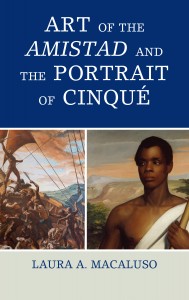We are proud to announce the newest spring 2016 titles in the AASLH Series from Rowman & Littlefield Publishers. View the full list of titles here, and remember that AASLH members always get 20% percent off the list price for our books.
Interpreting Difficult H istory at Museums and Historic Sites is framed by educational psychoanalytic theory and positions museum workers, public historians, and museum visitors as learners. Through this lens, museum workers and public historians can develop compelling and ethical representations of historical individuals, communities, and populations who have suffered. It includes various examples of difficult knowledge, detailed examples of specific interpretation methods, and will give readers an in-depth explanation of the psychoanalytic educational theories behind the methodologies. Audiences can more responsibly and productively engage in learning histories of oppression and trauma when they are in measured and sensitive museum learning environments and public history venues. Pre-order now.
istory at Museums and Historic Sites is framed by educational psychoanalytic theory and positions museum workers, public historians, and museum visitors as learners. Through this lens, museum workers and public historians can develop compelling and ethical representations of historical individuals, communities, and populations who have suffered. It includes various examples of difficult knowledge, detailed examples of specific interpretation methods, and will give readers an in-depth explanation of the psychoanalytic educational theories behind the methodologies. Audiences can more responsibly and productively engage in learning histories of oppression and trauma when they are in measured and sensitive museum learning environments and public history venues. Pre-order now.
 Interpreting American Military History at Museums and Historic Sites tackles the difficult task of helping those institutions charged with the care of sites, collections and stories relate to our past while still maintaining the dignity and reverence of their rich history. Looking at the various components of American military history such as battles and famous figures, Blackburn provides alternatives to the traditional museum experience. The 21st century is a culmination of the past and it is more important than ever to remember and learn from the triumphs and failures, and this guide provides and explains those strategies for making our stories and collections relevant to modern audiences. Buy now.
Interpreting American Military History at Museums and Historic Sites tackles the difficult task of helping those institutions charged with the care of sites, collections and stories relate to our past while still maintaining the dignity and reverence of their rich history. Looking at the various components of American military history such as battles and famous figures, Blackburn provides alternatives to the traditional museum experience. The 21st century is a culmination of the past and it is more important than ever to remember and learn from the triumphs and failures, and this guide provides and explains those strategies for making our stories and collections relevant to modern audiences. Buy now.
 Textile Collections: Preservation, Access, Curation, and Interpretation in the Digital Age. Collections of textiles—historic costume, quilts, needlework samplers, and the like—have benefited greatly from the digital turn in museum and archival work. Both institutional online repositories and collections-based social media sites have fostered unprecedented access to textile collections that have traditionally been marginalized in museums. How can curators, interpreters, and collections managers make best use of these new opportunities? To answer this question, the author worked with several organizations as well as user-curated social sites online such as Tumblr and Polyvore, to create four compelling case studies on the preservation, access, curation, and interpretation of textile objects. Buy now.
Textile Collections: Preservation, Access, Curation, and Interpretation in the Digital Age. Collections of textiles—historic costume, quilts, needlework samplers, and the like—have benefited greatly from the digital turn in museum and archival work. Both institutional online repositories and collections-based social media sites have fostered unprecedented access to textile collections that have traditionally been marginalized in museums. How can curators, interpreters, and collections managers make best use of these new opportunities? To answer this question, the author worked with several organizations as well as user-curated social sites online such as Tumblr and Polyvore, to create four compelling case studies on the preservation, access, curation, and interpretation of textile objects. Buy now.
 Marketing on a Shoestring Budget: A Guide for Small Museums and Historic Sites. Here’s a one-stop marketing guide just for small museums and historic sites. In an age when many local historical associations and museums take money from their marketing budget because resources are tight, which can start a vicious cycle of reduced marketing reach, lower visitation, and then even less money for marketing, this guide will help those who need it the most expand their marketing reach as inexpensively as possible. Pitel covers the pros and cons of each promotional tool so they can judge what is best for their organization. She writes specifically for colleagues who have no formal marketing training and have to work off the “trial and error” method. Buy now.
Marketing on a Shoestring Budget: A Guide for Small Museums and Historic Sites. Here’s a one-stop marketing guide just for small museums and historic sites. In an age when many local historical associations and museums take money from their marketing budget because resources are tight, which can start a vicious cycle of reduced marketing reach, lower visitation, and then even less money for marketing, this guide will help those who need it the most expand their marketing reach as inexpensively as possible. Pitel covers the pros and cons of each promotional tool so they can judge what is best for their organization. She writes specifically for colleagues who have no formal marketing training and have to work off the “trial and error” method. Buy now.
 Practical Evaluation Guide: Tools for Museums and Other Informal Educational Settings is an all-in-one resource to guide professionals working in museums and other institutions. This new edition includes updates throughout and features a brand-new chapter on evaluating digital interactive exhibits. The section on observational tools includes a new section on using video recordings and the section on interviews includes recent studies from countries outside the U.S. Administrators of museums and other informal-learning centers often need to demonstrate, in some tangible way, the effectiveness of their institutions as teaching tools. Practical Evaluation Guide discusses specific methods for analyzing audience learning and behavior in museums, zoos, botanic gardens, nature centers, camps, and youth programs. Buy now.
Practical Evaluation Guide: Tools for Museums and Other Informal Educational Settings is an all-in-one resource to guide professionals working in museums and other institutions. This new edition includes updates throughout and features a brand-new chapter on evaluating digital interactive exhibits. The section on observational tools includes a new section on using video recordings and the section on interviews includes recent studies from countries outside the U.S. Administrators of museums and other informal-learning centers often need to demonstrate, in some tangible way, the effectiveness of their institutions as teaching tools. Practical Evaluation Guide discusses specific methods for analyzing audience learning and behavior in museums, zoos, botanic gardens, nature centers, camps, and youth programs. Buy now.
 Art of the Amistad and the Portrait of Cinqué. While historians have examined the Amistad case for nearly two hundred years for its role in the long history of the Atlantic slave trade, there is an oil painting of one man that is central to the retelling and memorialization of the event. Visual and material culture about the Amistad in the form of paintings, prints, monuments, memorials, museum exhibits, quilts and banners, began production in the late summer of 1839 and has not yet ceased. Art of the Amistad and the Portrait of Cinqué is the first book to survey in total these Amistad inspired images and related objects, and to find in them shared ideals and cultural creations, but also divergent applications of the story based on intended audience and local context. Buy now.
Art of the Amistad and the Portrait of Cinqué. While historians have examined the Amistad case for nearly two hundred years for its role in the long history of the Atlantic slave trade, there is an oil painting of one man that is central to the retelling and memorialization of the event. Visual and material culture about the Amistad in the form of paintings, prints, monuments, memorials, museum exhibits, quilts and banners, began production in the late summer of 1839 and has not yet ceased. Art of the Amistad and the Portrait of Cinqué is the first book to survey in total these Amistad inspired images and related objects, and to find in them shared ideals and cultural creations, but also divergent applications of the story based on intended audience and local context. Buy now.
 Cemetery Tours and Programming: A Guide shows the range and opportunities of cemetery programming that go beyond traditional historic walking tours. It illustrates the reuses of both historic and contemporary burial grounds through the lenses of recreation, education, and reflection. this book is accessible to anyone (paid staff members, volunteers, a Friends Group, or museum or historical society) looking to broaden the scope of how their local cemetery is utilized. Buy now.
Cemetery Tours and Programming: A Guide shows the range and opportunities of cemetery programming that go beyond traditional historic walking tours. It illustrates the reuses of both historic and contemporary burial grounds through the lenses of recreation, education, and reflection. this book is accessible to anyone (paid staff members, volunteers, a Friends Group, or museum or historical society) looking to broaden the scope of how their local cemetery is utilized. Buy now.



